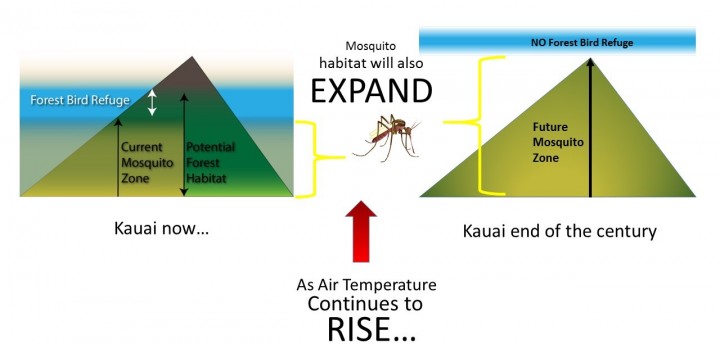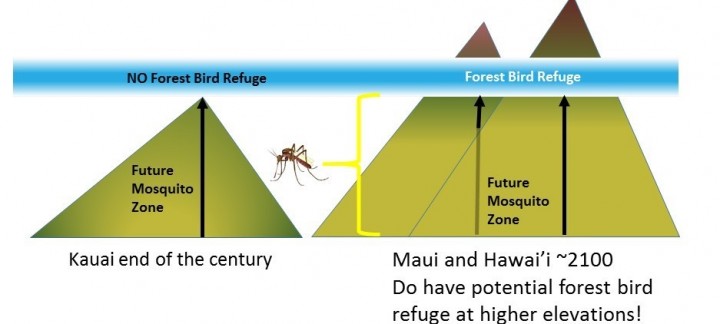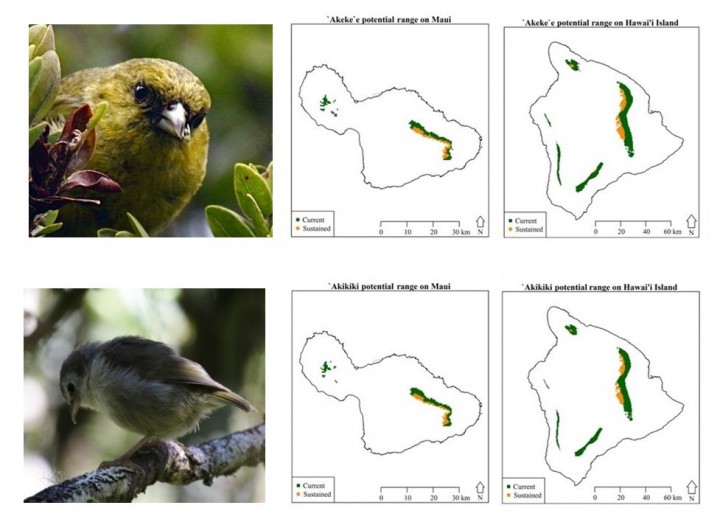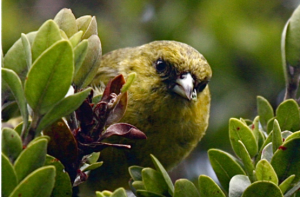
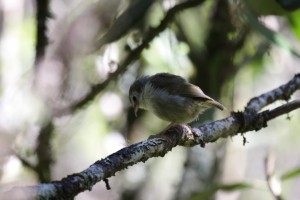
These two endemic Kauai forest birds seen above need our help! Both are ESA listed species, with less than 1000 ‘Akeke’e and 500 ‘Akikiki left. These honeycreepers can be seen in high elevations today, but historically they were seen mauka to makai. Why is that?
Mosquitoes thrive in warm climates, especially at lower elevations with stagnant water sources as breeding grounds and can infect birds with avian malaria and pox. Hence, mosquitoes & their diseases do not thrive in higher and cooler elevation forests making them refugia or “safe zones” for Hawaii’s forest birds. As temperatures rise due to climate change, mosquito habitat spreads higher up into our forests shrinking the refugia for native forest birds like these two critically endangered ‘Akeke’e and ‘Akikiki.
We are proud to announce a new peer-reviewed paper published in Ecology and Evolution called, “Assessing the potential of translocating vulnerable forest birds by searching for novel and enduring climate ranges.” Back in 2015, the Pacific Islands Climate Change Cooperative produced the Vulnerability Assessment for Hawai’i Native Forest Birds. The projected range loss for native forest bird species due to changes in temperature and rainfall by the year 2100 was pretty dismal. As PICCC specializes in applied problem-solving research, we knew we needed to improve tools to help resource managers adapt to these potentially severe climate impacts.
So what is a translocation? And why might this be one option for a Climate Adaptation? First of all, translocation or assisted migration is moving a species to an area with more favorable climate and habitat conditions. This recent research looked at novel habitats around the Hawaiian Islands suitable for these birds with cooler temperatures such as Maui and Hawai’i seen below.
We know that there are many threats to our forest birds such as deforestation, invasive plant species (which impact foraging/nesting), feral ungulates (which disturb under story, prevent forest regeneration & disperse non-native seeds), introduced predators (cats, rats, and barn owls), mosquitoes and avian diseases, non-native birds (competition), and catastrophic events (hurricane, fire, etc.). With numerous agencies holding the line with many of these threats our conservation work will most likely change over time as well.
We recognize that this is one of many climate adaptation options for these birds. It does not come without controversy & complexity. We are are not advocating for translocation, but only providing the first answers necessary to help managers evaluate it as an option. We realize that there is no one magic solution now, but we recognize that several options are being considered at the same time: significant predator control in Kauai to minimize other stressors; the start of a captive breeding program for both species to safeguard them from extinction; and the exploration of new ways to control the spread of mosquitos across the landscape. We are thankful that our conservation community is actively doing everything in our power to protect these rare forest birds and maintain and restore their habitats so that future generations get to see and enjoy these beautiful birds.
Check out some ways you can help: http://kauaiforestbirds.org/get-involved/what-you-can-do/
To learn more about PICCC’s Hawaiian Terrestrial Adaptation Initiative please visit: http://piccc.net/project/hawaiian-islands-terrestrial-adaptation-initiative/

